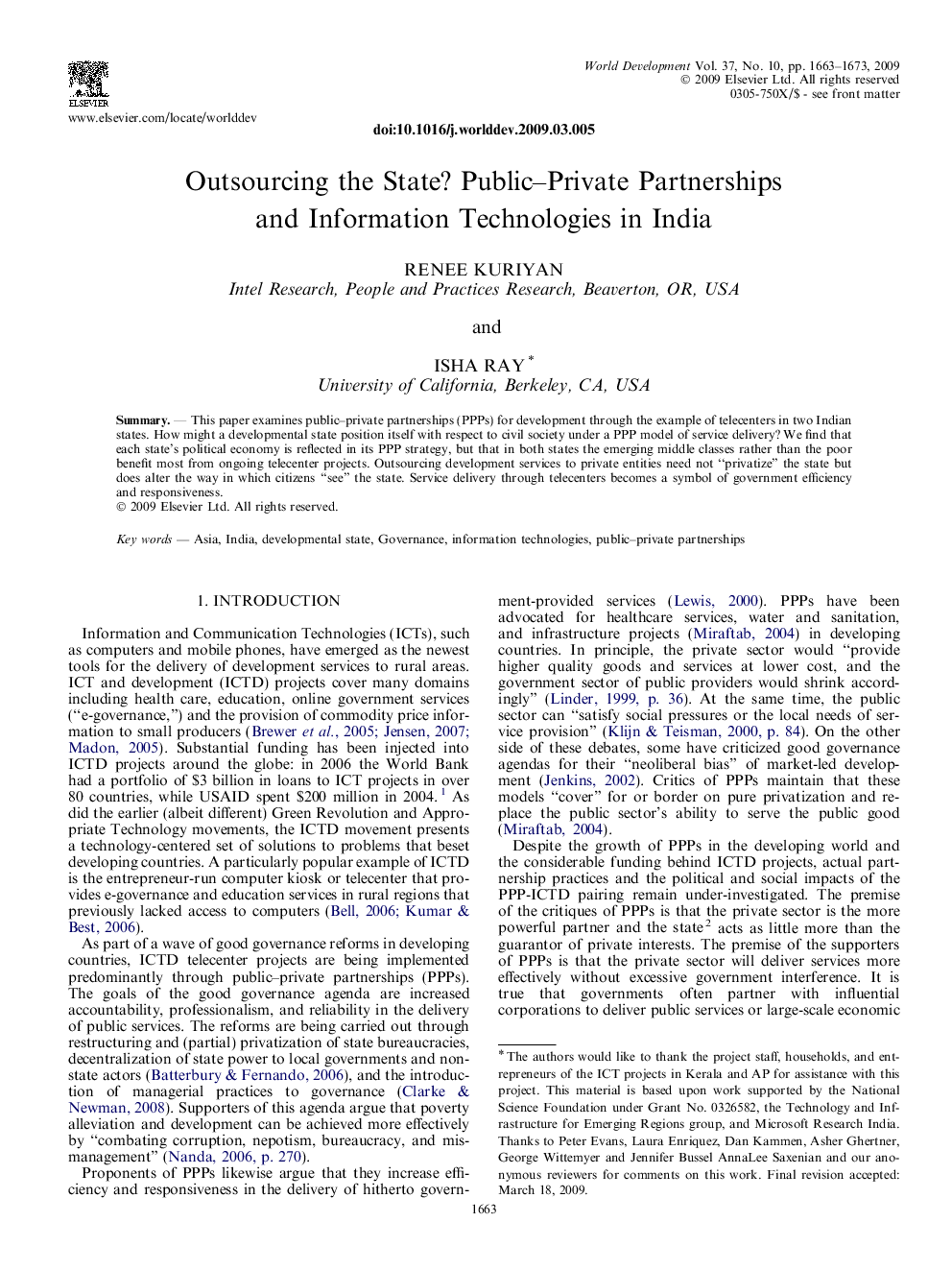| Article ID | Journal | Published Year | Pages | File Type |
|---|---|---|---|---|
| 989343 | World Development | 2009 | 11 Pages |
Abstract
SummaryThis paper examines public–private partnerships (PPPs) for development through the example of telecenters in two Indian states. How might a developmental state position itself with respect to civil society under a PPP model of service delivery? We find that each state’s political economy is reflected in its PPP strategy, but that in both states the emerging middle classes rather than the poor benefit most from ongoing telecenter projects. Outsourcing development services to private entities need not “privatize” the state but does alter the way in which citizens “see” the state. Service delivery through telecenters becomes a symbol of government efficiency and responsiveness.
Related Topics
Social Sciences and Humanities
Economics, Econometrics and Finance
Economics and Econometrics
Authors
Renee Kuriyan, Isha Ray,
